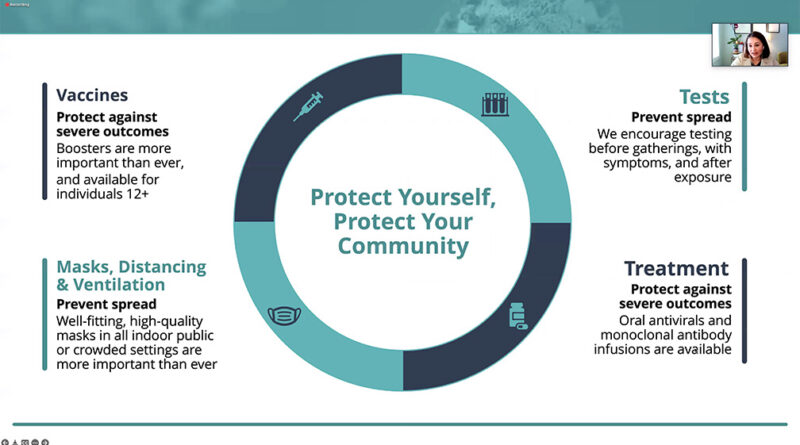‘Entering new phase of the pandemic’
by Richard Lamb–Advance Editor
“We are entering a new phase of the pandemic. This is no longer something that is causing a few hundred or a few thousand cases throughout the state. This is something that is really taking off and the numbers are simply such that I don’t think we could even deal with every case,” said Dr. Natasha Bagdasarian, Michigan’s chief medical executive, who replaced Dr. Joneigh Khaldun last September. 
The statement came in a Zoom press conference Tuesday morning that spelled out where the state is at this point in the fight against the novel coronavirus (COVID-19) pandemic.
Along with Elizabeth Hertel, the director of the Michigan Department of Health and Human Services (MDHHS), Bagdasarian showed studies that point to a pessimistic outlook for the near future, regarding cases, hospitalizations and deaths caused by COVID-19.
“What we are expecting is a very sharp and fast peak (regarding cases),” Bagdasarian said.

The most pessimistic model estimates more than 200,000 new cases per week in the state, she said. That is the model she said that has been most accurate when predicting the spread of the virus. The same model predicts around 8,000 new hospitalizations per week for the next eight weeks.
“What these models are not taking into account is the fact that our health care system is already under a great deal of strain. Adding more cases, even if we didn’t add a significant number of cases is going to result in further strain and further worst outcomes,” Bagdasarian explained.
Tools to combat the population include those that have been stressed all along, she said. Those start with vaccines, to protect against severe outcomes and they are available for people 12 years of age and older.
“We know that vaccines protect against severe outcomes and death. The role of boosters is more important now than ever. We really need to make progress in our state to vaccinate in our state those who are in the youngest age groups,” Bagdasarian said.
She recommended the use of well-fitting, high-quality masks, distancing and ventilation, to prevent the spread of the virus.
The use of testing is important, she said, especially before large gatherings, if you have symptoms or after suspected exposure to someone who has COVID-19.
“Tests have been part of our tool kit from the beginning, however now we have over the counter and antigen tests. I understand the availability of these tests has been a struggle and we are working to increase the availability,” Bagdasarian reported.
Treatment is available to prevent severe outcomes through oral antivirus and monoclonal antibody infusions.
“This is a bright spot in our COVID pandemic situation. We now have the availability of two oral antivirials. There are now two antivirals that have come into the state and are now being prescribed. They are both available in limited q
Using all of the tools is critical, she explained.
“We really need to work together and utilize these tools because, as I tried to lay out, with the data, this surge is not like previous surges. We are expecting to see many, many more cases. What we want to prevent is many, many more hospitalizations and deaths,” Bagdasarian pleaded.

